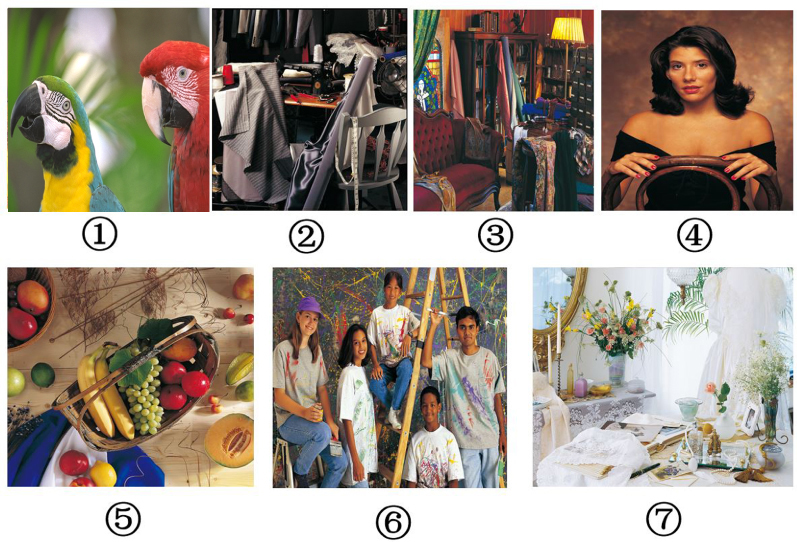
To solve the problem of color separation of printed images, this paper proposes a black generation algorithm that can maximize the gamut of the CMYK output color space. This proposed method considers the printing gamut space as a CMY color cube and divides it into six sub-gamut spaces using the gamut center diagonal. First, the color targets and algorithms are designed to calculate a gamut center diagonal black lookup table and two gamut boundary black lookup tables for each sub-gamut. Then, for an input color, the three corresponding lookup tables are found by determining the sub-gamut space where the input color is located, and the final CMYK amounts are determined by interpolating the corresponding color points on these lookup tables. Finally, the interpolation calculation results are further optimized using the neighborhood-search strategy. The color-difference evaluation experiment shows that the proposed algorithm can achieve a mean color difference of less than 1 CIEDE2000 standard color-difference unit when reproducing the standard test color target. The gamut reproduction evaluation experiment shows that the gamut distribution and gamut size obtained by the proposed algorithm are closer to the source gamut space than the Gray Balance algorithm. The image reproduction test experiment shows that the proposed algorithm can effectively reproduce the dark details of images and meet the image reproduction requirements of the printing industry.
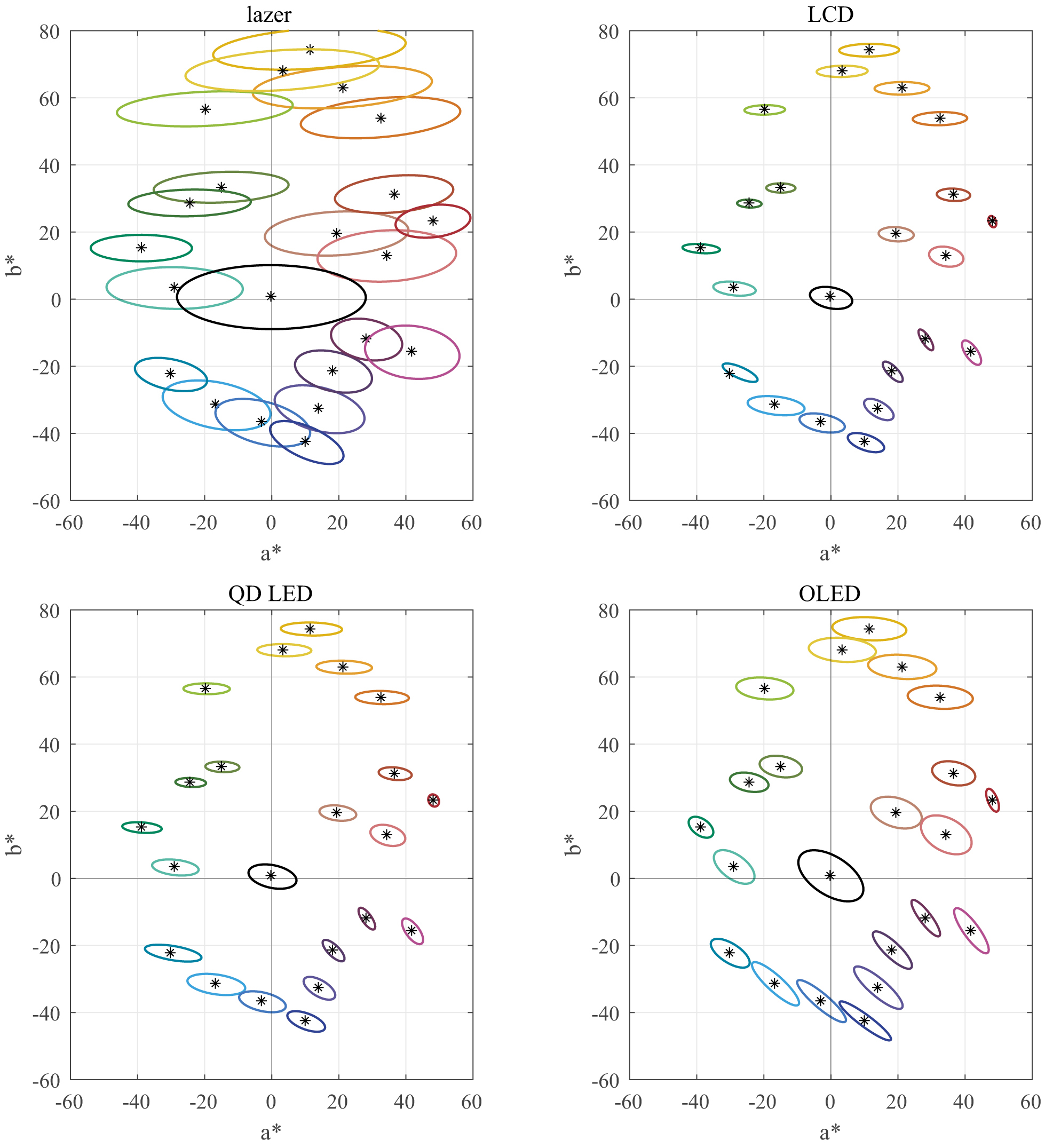
When two colors are presented under identical viewing conditions, they may appear the same to one observer but different to another, a phenomenon known as observer metamerism (OM). This effect is caused by individual differences in their color matching functions (CMFs). To achieve accurate color reproduction between displays, it is essential to minimize OM. This study first investigated OM between four displays in cross-media reproduction through computer simulations. Next, the relationship between metamerism in the displays and the RGB peak wavelengths was examined. The simulations were also used to explain the effects of individual variation on the orientation of OM ellipses in displays, from the perspective of human visual physiological parameters. The analytical approach developed in this study provides a valuable framework for predicting OM across different display technologies.
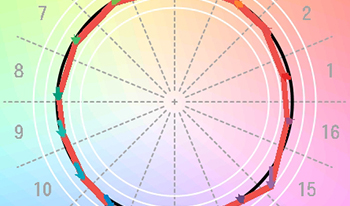
Professional digitization of cultural heritage items in the Polish State Archives can be divided into two major branches: digital imaging of transparencies and reflectives. While the latter has been meticulously standardized in accordance with ISO 19264 and domestic guidelines, the case is much different for the former. This paper is aimed at addressing the issue of color in mass digitization projects.
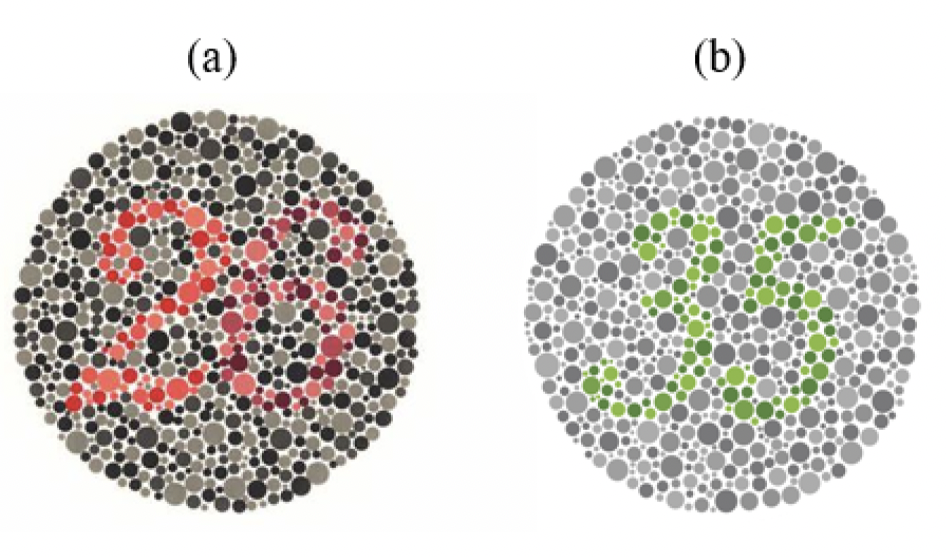
A simulation was performed using simulated displays to examine how the results of the computerized color vision test are influenced by display characteristics, and color reproduction methods. In this work, the color difference between the background and the number in the test plates was employed to quantify the visibility of the target number in the computerized test. The results have indicated that for the color-appearance-based reproduction method, the impact of display characteristics on the target visibility is minimal except for the displays with extremely narrow bandwidth. While for the tristimulus-based reproduction method, it is necessary to consider display characteristics for the computerized color vision test.
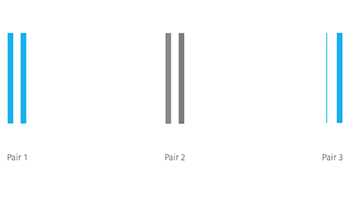
Imaging is enabled by the limitations of the human visual system, which is blind to certain physical differences. The trichromacy of human vision, e.g., allows for very different materials to be combined in a way that results in the same signals triggered by the eye’s cones. As a result a print can elicit the same response as a display, or a projection can yield colors like those in a painting. The limits of spatial acuity too allow for discrete patterns, e.g., those resulting from halftoning, to appear continuous. This paper turns its attention to the limits of color difference perception in stimuli with a very small subtense, such as thin lines or fine features of 3D objects. A first set of psychophysical data, obtained in an on-line visual experiment, indicates a dramatic relaxation of perceptibility thresholds when comparing very thin with thicker lines. The second half of the paper then presents printer imaging pipeline strategies that take advantage of these experimental findings to successfully render fine lines while taking advantage of the more limited sensitivity with which their specific colors are perceived.

Since recent years, smartphone-based color imaging systems are increasingly applied for Neonatal jaundice detection applications. The systems are mostly performing the estimation of bilirubin concentration levels based on the correlation of newborns' skin colour images with that of total serum bilirubin (TSB) and transcutaneous bilirubinometry (TcB) measurements. However, the colour reproduction capacity of smartphone cameras are known to be influenced by various factors resonated from the technological and acquisition process variabilities. For an accurate bilirubin estimation, despite the type of smartphone and illumination conditions used to capture the newborns' skin images, a complete model, or data set, which can represent all the possible real world acquisitions scenarios has to be utilized. Due to various challenges in generating such a model or a data set, some solutions opt towards the application of reduced data set (designed for reference conditions and devices only) and colour correction systems (for the transformation of other smartphone skin images to the reference space). Such approaches will make the bilirubin estimation methods to be highly dependent on the accuracy of their employed colour correction systems, in their capability to reducing device-to-device colour reproduction variability. However, the state-of-the-art methods with similar methodologies usually were only evaluated and validated on a single smartphone camera. But the vulnerability of the systems to wrong jaundice diagnosis can only be shown with a thorough investigation of the colour reproduction variability for extended number of smartphones and illumination conditions. Accordingly, this work presents and discuss the results of such broad investigation, including the evaluation of seven smartphone cameras, ten light sources, and three different colour correction approaches. The overall results show statistically significant colour differences among devices, even after color correction applications, and that more control and caution is required in the application of smartphone devices for skin colour based jaundice diagnosis.